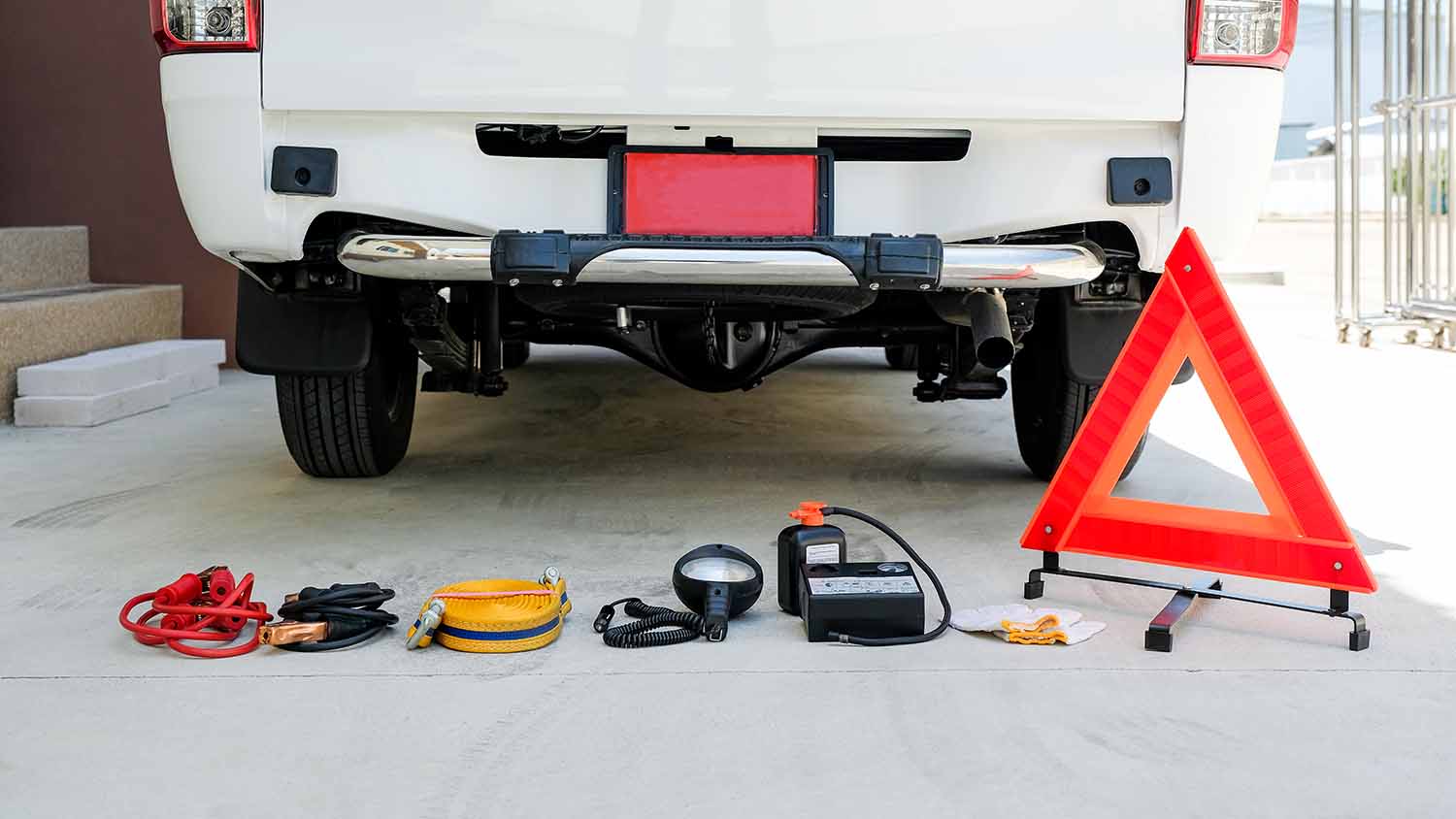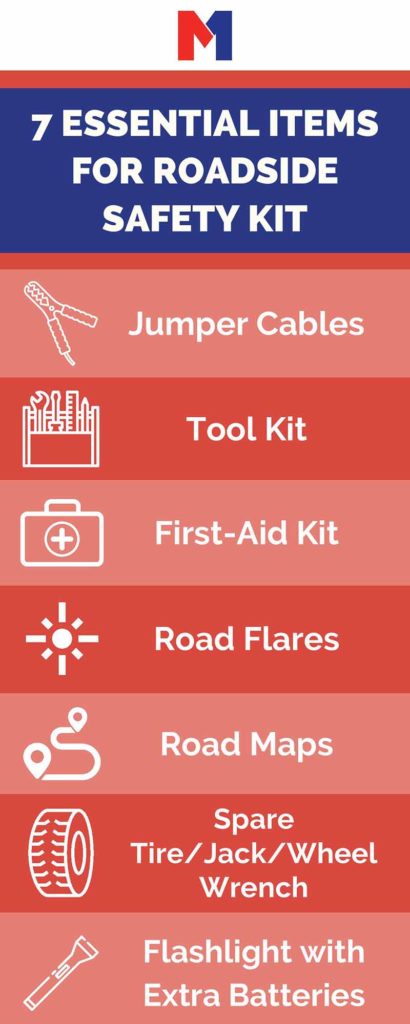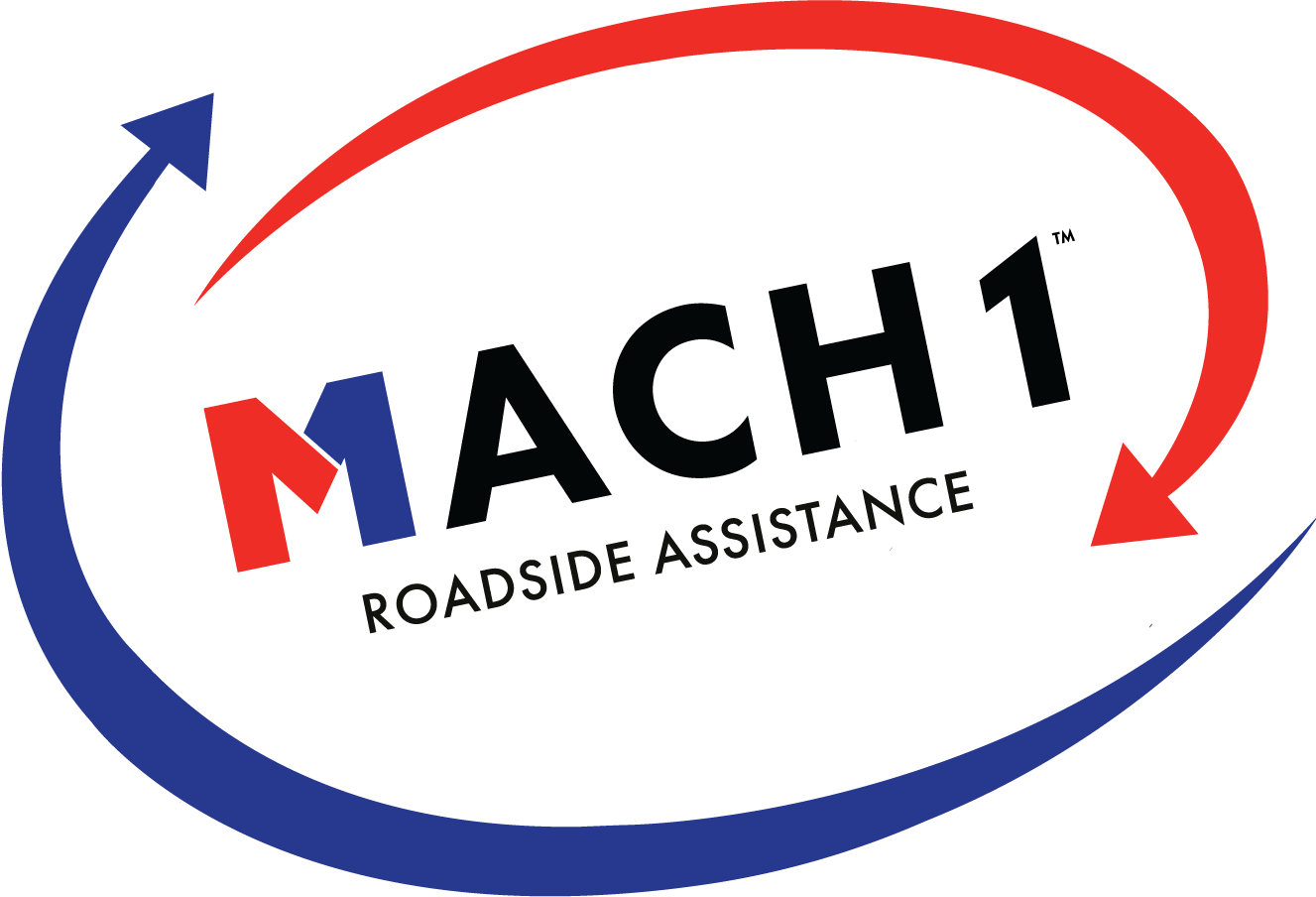
31 Jan 7 Essential Items for Roadside Safety Kit
Whether you are a casual commuter who mainly drives in the city or an off-the-beaten-track type who finds themselves in the sticks—over time, getting a flat tire on your way to work or getting stuck in the mud is bound to happen. When these scenarios come into play, having the right supplies in your vehicle, like a roadside safety kit, can make all the difference in safely and quickly fixing the situation without leaving you stranded for hours on end.
Having jumper cables, a tool kit, medical kit, road flares, road maps, flashlight, and a spare tire with a jack and wheel wrench are a few essential items every roadside safety kit must have.
Any additional items in your roadside kit will vary depending on the trips you regularly take, the terrain you drive in, and your local climate. Keep reading to learn more about the essentials and why they are an absolute must for any roadside safety kit.
What Should Be in a Roadside Emergency Kit?
The majority of the time we drive to go anywhere, it is smooth sailing on the road—so much so that it is easy to forget that accidents happen big and small, whether it is a simple flat tire or a serious traffic collision.
To ensure your safety and the safety of everyone else on the road, being prepared with a roadside emergency kit can make all the difference in the convenience of your trip and even save lives.
7 Essential Items for a Roadside Safety Kit
Regardless of the road conditions you drive in, your location, or even your local climate, there are some roadside supplies that every vehicle should have.
 Jumper Cables
Jumper Cables
If you are like most common drivers, the heath and lifespan of your car’s battery is probably not the first thing on your mind when you leave home. While keeping tabs on your car battery is a smart thing to do, it is often overlooked, which is why keeping a pair of jumper cables is an essential item for your roadside safety kit.
Note: Using jumper cables does not take rocket science, but improper use can exacerbate your roadside dilemma. If you don’t use your cables properly, you can potentially cause further electrical damage to your vehicle or even destroy your battery—not to mention risk severe shock. Check out this guide to using jumper cables the right way.
To avoid situations where jumper cables may be needed, we recommend staying mindful of unnecessary battery use. The most common reasons for fast battery drainage are:
- Leaving your headlights on: make sure they’re off after turning off the vehicle.
- Overusing and relying on your battery without your engine engaged: if you are using electronics in your car, try to turn on your car periodically to save your battery and avoid drainage
Tool Kit
Having a tool kit in your car does not mean you have to be a professional automotive mechanic to get yourself out of a tight situation. Often popping your hood and scanning your vehicle’s engine components for any loose nuts, bolts, cables, or wiring can lead to the quick fix you would typically be relying on a tow-truck and auto shop for.
Here are some essential tools to keep in your roadside tool kit:
- Socket wrench and screwdriver set
- Pliers
- Pressure gauge
- Duct tape
- Window and seatbelt escape device
- Tow strap
- Shovel
These standard tools should be all you need to get yourself out of most minor mechanical issues with your vehicle. This pre-made tool kit is a great place to start to get most of the essentials in one bundle.
If the issue is beyond your knowledge, be sure to call the right roadside service to come help you out of a tough situation.
First-Aid Kit
Whether you are experiencing a situation on the road where you need medical attention or pulling over to assist someone in distress, having a first-aid kit with basic supplies is a must.
The following are basic first-aid items to store in your vehicle’s roadside safety kit:
- Gauze
- Bandages/Band-Aids
- Antibiotic ointment
- Nonlatex gloves
- Tweezers
- Scissors
- Ibuprofen
- Instant icepack
Having a basic understanding of first-aid can also be vital for treating yourself or someone else experiencing a medical emergency. Review this guide if you are not adept with basic first-aid procedures.
Note: If you are not confident in your ability to treat yourself or someone else, call for medical assistance immediately.
Road Flares
One of the most dangerous times to be experiencing an issue with your vehicle is at night, which is why giving oncoming traffic a clear indication of your location and position on the road can result in someone safely responding to your aid while avoiding further road hazards.
Having a set of road flares is encouraged in every roadside safety kit and becomes especially useful if you find yourself driving on winding roads or in remote areas at night. If you are stuck on the side of the road in either environment, place several road flares within a reasonable distance of your vehicle to give fair warning to passers-by.
It’s worth noting that the use of traditional, incendiary road flares is not always recommended due to fire risks. However, there are alternative, affordable solutions, such as these modern LED Safety Road Flares.
Road Maps
The digital age navigation apps we have all become so dependent on has left most people at a loss when it comes to pulling out a traditional road map.
With that being said, getting stuck on the side of the road with a dead phone battery may make you think twice about casting this old-school resource aside.
Having a reliable road map as a back-up in your roadside safety kit can make all the difference in finding your way to your destination or pinpointing your stranded location.
Spare Tire/Jack/Wheel Wrench
Since a flat tire is one of the most common reasons for getting stuck on the side of the road, you want to make sure your roadside safety kit is equipped with a properly inflated tire, a jack, and a wheel wrench.
Luckily, these items are something that almost every single car will likely already have in their trunk, without you needing to go out and buy them. However, while every vehicle is sure to have these items, it does not mean that we all know how to use them. Check out this guide to learn about how to change your tire correctly.
Flashlight with Extra Batteries
Having a flashlight in your roadside safety kit is one of the most useful and versatile items you can have in your car. When you are stuck on the side of the road at night trying to figure out what is going on with your car, there is no better item than a flashlight to diagnose your vehicle’s state. Alternatively, you may find that a flashlight is also a great way to signal for help if you cannot handle repairs on your own.
Of course, with your flashlight, make sure you also keep extra batteries for it on hand in case its current batteries die.
What is the Best Roadside Emergency Kit?
Having a roadside kit in your vehicle is an essential measure to get you from point A to point B safely, regardless of where you are going. However, the contents of your roadside emergency kit may vary depending on the type of trips you take regularly.
If you are the average commuter who goes to work and takes casual road trips here and there, a rather basic and straightforward kit with the items listed above should get the job done just fine.
However, if you find yourself driving in desolate areas or being the adventurous type, you should consider having an expansive and technical kit to be ready for anything, especially if you go off-roading.
You should reflect on the type of driving you do and adjust your kit based on your needs and local roadside hazards. For example: When living in an arid, dessert-like region, keeping an adequate water supply in your vehicle is highly encouraged.
What Should Be in a Winter Emergency Car Kit?
There are few scenarios that require a well-prepared, specialized emergency car kit, like a snowy winter season. Getting stuck on the side of the road during any time of year is annoying, but being in below-freezing weather amidst a blizzard can be a truly life-threatening situation without the right tools.
Given the increase of danger in getting stuck somewhere in winter, you will want to add some additional items to your roadside emergency kit besides the ones mentioned above—especially if you can’t resolve the problem with your vehicle on your own.
Add the following items for a winter season roadside safety kit:
- Sleeping bags/emergency blanket: If you are stuck in the cold, keeping warm will be essential, which is why having a couple of insulated sleeping bags or an emergency blanket is highly encouraged.
- Hand and feet warmers: Having an additional source of warmth is a good safety net to pair with your sleeping bags or an emergency blanket to ensure you stay safe during extreme winter conditions.
- Nonperishable foods: A bag of high-energy dry foods with a long shelf life can be the only food source you have until you get yourself out of your current dilemma.
- Snow brush: Without your vehicle’s heating system engaged, you can expect frost to layer over your windshield. A snow brush will be mandatory to regain clarity in your windshield before you can safely drive again.
- Cat litter: A classic roadside life hack during the winter season is to utilize cat litter to create traction underneath your tires when you are stuck in the snow; it will absorb moisture and create a grip for your tires to get you back on the road.
Driving during the winter season is a whole new ball game, and you should improvise your roadside emergency kit accordingly throughout the year to make sure you are prepared for the worst once the snowy weather hits.
Conclusion
No one enjoys having to pull over on the side of the highway trying to diagnose the issue of their car, but being prepared with the proper supplies needed to get you back on track can make all the difference in relying on a costly tow-truck and mechanic and getting stranded for hours.
While the contents of your roadside safety kit may vary depending on your climate and location, having jumper cables, a tool kit, a first-aid kit, road flares, roadmaps, a flashlight, and a spare tire with jack and wheel wrench are the essential items every vehicle should have at all times.
So, the next time you find yourself stuck with an issue with your car, make sure you are prepared with the right supplies to get yourself back on the road.
